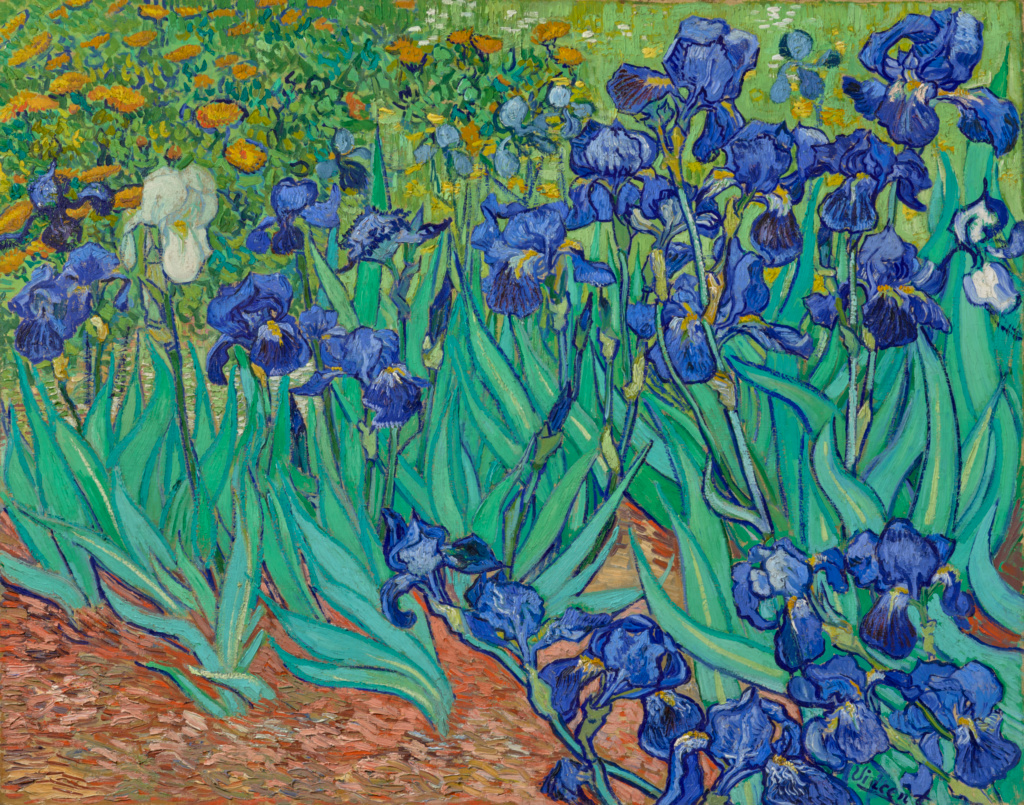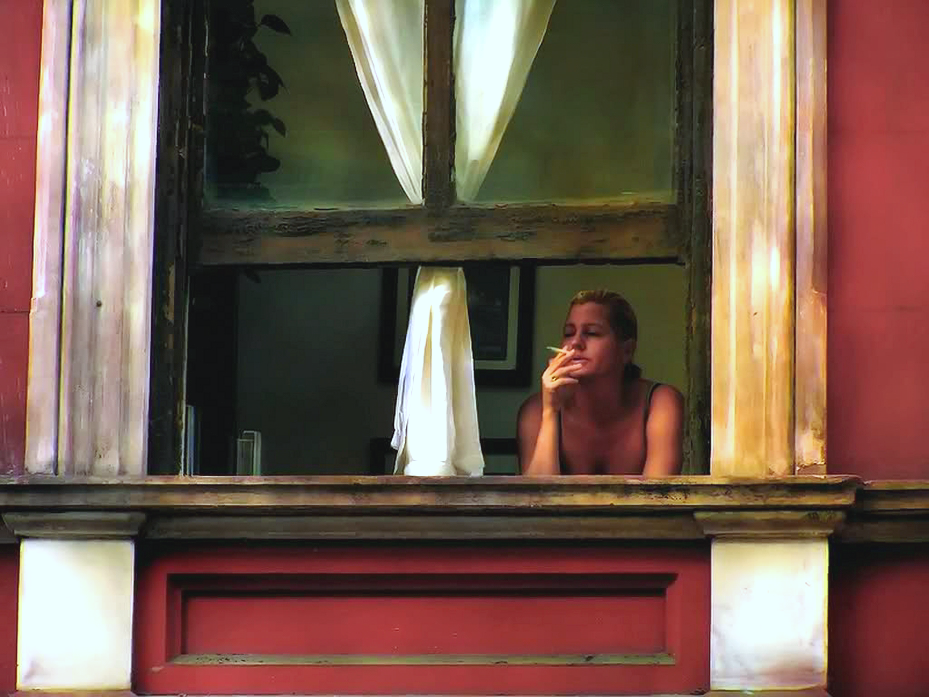It seems to me that BIPOC communities are leading the way in the field of art in health, and so arts in health professionals, and those training into the profession, would benefit by looking to them as leaders, as expert practitioners, as sites for valuable collaboration and professional training.
Read moreDesign Decisions: Distraction and Efficiency
“An Architectural Fantasy,” by Jan van der Heyden, c. 1670. From the National Gallery of Art.
Framing the concept of “distraction” in opposition to “efficiency” tellingly illuminates how design choices are made when certain bodies are routinely subject to the rule of efficiency at the cost of other considerations.
Read moreA New Literature Review Updates the Field
A recent literature review appeared quietly last year in a clinical medical journal. In “Evidence-based Art in the Hospital,” 30 original sources are gathered and summarized to yield suggestions for making art selections in patient rooms and in social areas. This list of sources includes some of the fresh evidence that has been moving the field in new directions and broadening its scope of inquiry.
Practitioners in the field would benefit from reading through these sources as a sort of primer, as it is both comprehensive and definitive.
Read moreReview: "Purpose-Built" Art in Hospitals: Art with Intent
Anyone selecting art for hospitals should study this book, now the most up-to-date and authoritative resource for visual art in healthcare environments, and one that helps to bridge the gap between healthcare architecture and design on the one hand and arts in health on the other.
Read morePainting by Numbers
Detail, “America’s Most Wanted,” 1993, Vitaly Komar and Alexander Melamid.
In 1993, two Russian dissident artists, now working in the United States, attempted to discover, by way of consumer polling techniques including phone surveys, focus groups, and town meetings, what would be America’s most wanted painting.
Read moreTwo Fields: Arts in Health :: Architecture & Design
Our topic – the role of healing art design in healthcare settings, and in service of public health – falls squarely between two related fields that are need of acknowledging and addressing one another.
Read morePicture, Image, and Experience
As promised on Facebook some weeks ago, I picked up a copy of Barry Schwabsky’s new Landscape Painting Now, based on a glowing review by Peter Malone in Hyperallergic. The book argues for the capaciousness of landscape painting as a genre though a wide-ranging survey of contemporary practices.
Read moreOriginal Questions and New Questions
Edward Hopper, Woman Smoking, Looking Out Window, 1940.
The practice of evidence-based design, as it is defined and credentialed, as its history is told, its storehouse of knowledge kept at the Center for Health Design, famously begins with a single study by psychologist Roger Ulrich. Having published previously in environmental psychology, specifically on the subjects of “visual landscapes,” he made a discovery in 1984 that helped to create an entirely new field of study.
Read moreArt in Research, or the Art of Research: A Matter of Definitions
As a sort of thought experiment, pretend you had no idea what art – visual art – might be, and you tried to formulate some concept of it by reading "A Guide to Evidence-Based Art.” You would certainly come away with at least one salient idea, that visual art has content. The list of features that are most often repeated and specified in the field are described as “art content.” This conception tellingly passes over a middle term, that of the image. Artwork contains images, and those images may be pictures, depictions of persons, places, or things. Or they may not. To put it simply, visual art may be “representational” or “abstract.”
Read moreA Word of Caution
The Turning Road, L'Estaque, Andre Derain, c. 1906
If you were howling when you read the subject recommendations for “evidence-based art,” perhaps you know a thing or two about visual art. You may be an artist, an interior designer, or a collector. You may be a gallery-goer, a museum devotee, or a fine-art gadabout, like me. You may have studied some art history, entered the art market, or even followed innovative art practices that are leaving galleries and museums behind.
But we must recognize and acknowledge that we arts professionals and enthusiasts, by virtue of our practice, experience art differently from other people.
Read moreIt's Time to Update "A Guide to Evidence-Based Art"
The “Guide to Evidence-Based Art” was published in 2008. In ten years, a lot of new data, new questions, and new ideas have made it clear that the guide must be updated. The consequences are real.
This guide acts as a sort of specification system for hospital systems and architects who seek qualified professional art consultants to outfit their new spaces with healing art programs. The guide does not set rules, but it is still treated as a sort of rule-book, entirely contrary to the first principle of evidence-based design.
Read moreThe Guide to Evidence-Based Art
When people ask me what I write about, I bring up our shared experience of ordinary encounters with the healthcare system. Visits to hospitals, doctor’s offices, specialty clinics, physical therapy, childbirth, treatment for chronic disease, emergency care, waiting at the pharmacy, regular wellness exams, eye exams, dental exams, as well as our visits to attend to our friends and and family who are sick or dying. What does it look like? Do you notice the art? Did you know that someone had to make deliberate decisions about what works of art to acquire and install? How were these decisions made?
Read moreAn Introduction to Evidence Based Design
"Florence Nightingale" ward, St. Thomas's Hospital, adopting the principals of Florence Nightingale, considered the first to practice “evidence-based design.”
In the field of healthcare design, where decisions are made by hospital administrators, architects, and the teams they recruit to launch and direct expensive building and renovation projects, it wasn’t always the case that design decisions were made by first deliberately looking at what available evidence would have to say about this or that design choice.
Read moreMaking the Case for Social Support
“There’s tremendous power in the group.” Photo by Coburn Dukehart/NPR.
It’s notorious difficult to trace measurable health outcomes to arts interventions in healthcare design. Participatory art programs and art therapy, on the other hand, are regularly evaluated in terms of their beneficial outcomes.
I do want to draw a connection between participatory programs and art design in order to make the claim that “arts in health” - the term that encompasses all the many interventions - must play an essential role in healthcare delivery.
But first, I want to highlight one aspect of visual art design that has so far been neglected by the current scholarship, as well by the most accepted professional guidelines: its ability to foster social connection.
Read moreSocial Determinants of Health and Social Proscribing
A visitor at the Louvre, Paris. Photo by Dustin Gaffke.
Hospital systems are increasingly adopting the framework offered by the field of public health, or community health, to address their communities as a whole, not just individuals who are ill. Public health practitioners begin with the principle that health outcomes have social determinants, which include safe housing, places to walk and socialize outdoors, contact with nature, access to healthy food, and of course access to the arts.
Read moreWhat is Art?
From Chauvet Cave, southern France, between c. 33,000 and c. 30,000 years ago. Illustration by Thomas T.
I recently attended the annual meeting of the National Organization of Arts and Health (NOAH) which was very illuminating, and for my interests, very helpful for understanding the larger contexts of the subjects I’m pursuing here: visual art, health, and design. I’m sure I will have more to say about those contexts later, but first a note about what we mean when we talk about art.
Read moreDesign for Dignity
So here’s where it all begins.
The concept of dignity recurs often in the discourse of healing design. The theory of supportive design names dignity explicitly in as part of its formulation. Recent work on the concept of healing - as opposed to curing - also identify dignity as one of several as defining qualities.
And the meaning of dignity itself deserves some attention.
Read moreFirst thoughts
I’m excited to launch an exploration of art, design, and health. I am a writer, researcher, and thinker, challenging practitioners and decision-makers with insights from across disciplines. I examine the successes and challenges of those who are doing this important work. Step one: launch the website.
Step two?















